On View
She’s Not President (Yet), But Oprah Winfrey Has Already Taken Over DC—as an Art Exhibition
The Smithsonian's newest exhibition honors the popular talk show host, actress, and activist.

The Smithsonian's newest exhibition honors the popular talk show host, actress, and activist.

The National Museum of African American History and Culture is celebrating the life and legacy of Oprah Winfrey. The celebrated talk show host, who became the world’s first self-made African American woman billionaire, is now the subject of a new 4,300-square-foot exhibition that opened on Friday and will be on view for the next year. The show highlights Winfrey’s career accomplishments and contributions to American culture, as well as her work as an activist for African American rights.
Ahead of the opening, an emotional Winfrey walked through the show, at the institution she was instrumental in bringing to life—her gift of $21 million made her the museum’s largest individual donor. She moved to tears after reading notes of praise in the exhibition guest book, such as one message claiming that “watching Oprah every day is the reason I love myself so fiercely.”
“What it does is allow me to actually have affirmed for me what an astounding life this is,” Winfrey told the Smithsonian. “You know, I thought it was in my own head, but when you see it laid out in a scholarly fashion, organized in terms of the influence and impact that my life and the life of the show has had, it’s pretty profound.”
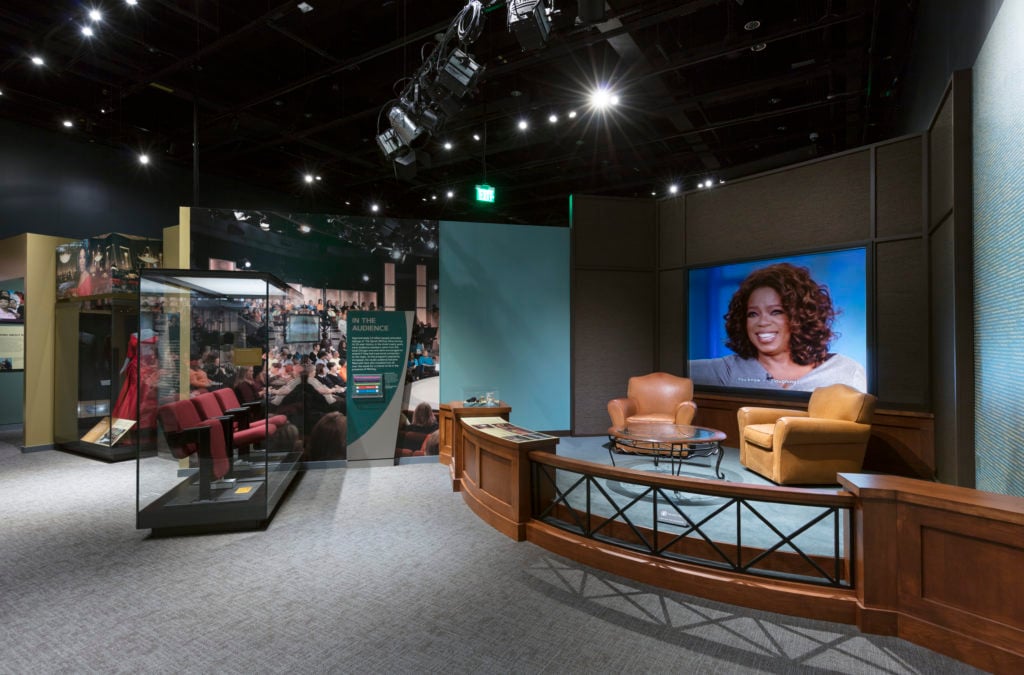
Installation view of “Watching Oprah: The Oprah Winfrey Show and American Culture” on view at the Smithsonian’s National Museum of African American History and Culture. Photo courtesy of the National Museum of African American History and Culture.
This isn’t the first time that Winfrey has been featured at the museum: The institution’s inaugural exhibition, “A Changing America: 1968 and Beyond,” still on long-term view, includes a couch from the set of The Oprah Winfrey Show at Chicago’s Harpo Studios as well as several other items she donated to the museum.
More than 240 other artifacts, including the talk show host’s desk, a golden microphone from the set, and a costume from The Color Purple: The Musical, produced by Winfrey in 2005, are on view in the new show.
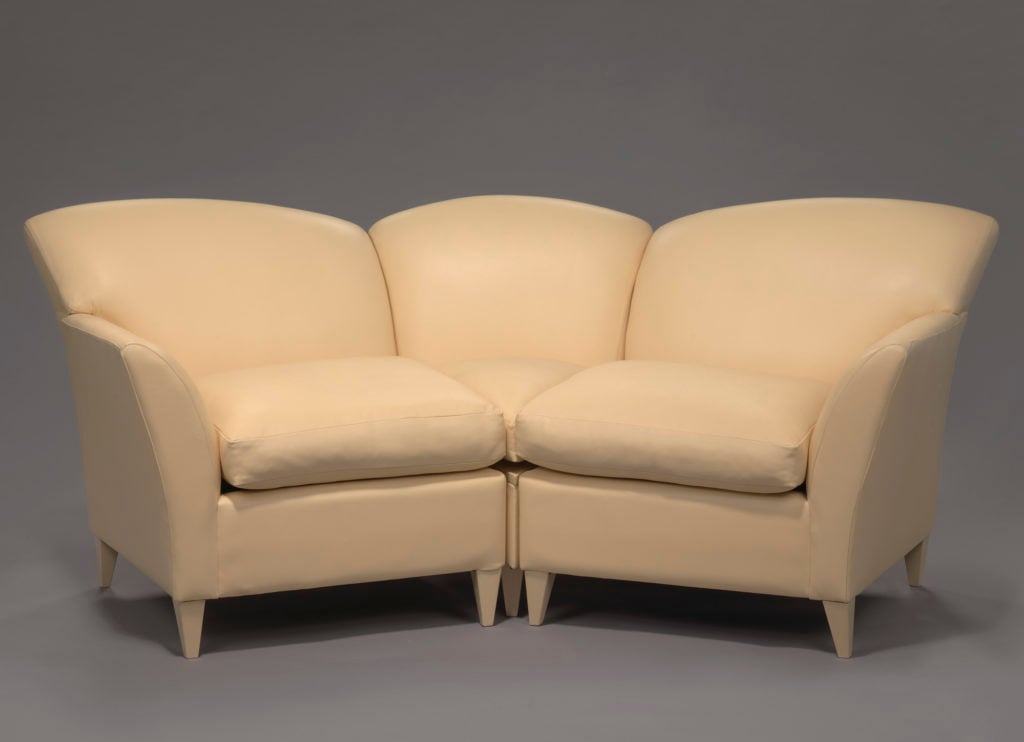
A sectional leather couch or sofa used on The Oprah Winfrey Show. The couch is upholstered in a light yellow leather. The couch curves in a semi-circular shape. The left and the right sections are for sitting, while the center section is topped with a table top on which Winfrey and her guests could place cups and other items. Photo courtesy of the National Museum of African American History and Culture.
Born in Kosciusko, Mississippi, in 1954, the same year that the US Supreme Court outlawed segregation in schools in Brown v. Board of Education, Winfrey, a survivor of childhood sexual abuse, rose to fame from the unlikeliest of circumstances. She was demoted from a news anchor job in Baltimore in 1977, which led to a job at a daytime program in 1977. There, Winfrey found what was to be her true calling.
The first part of the exhibition, “America Shapes Oprah, 1950s–1980s,” pairs her childhood photographs with artifacts relating to the civil rights movement, and prominent African American women who influenced Winfrey’s early years—a dress Diana Ross wore performing with the Supremes, and a photograph of Congresswoman Shirley Chisholm.
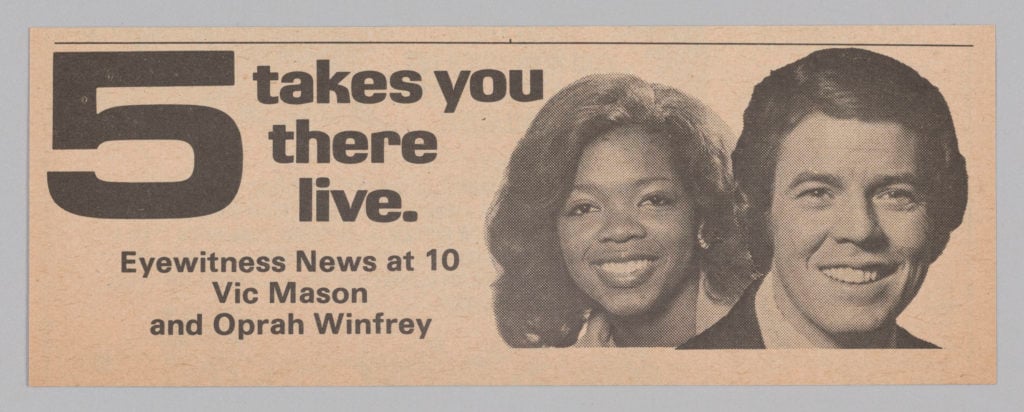
Advertisement for Eyewitness News at 10 featuring Oprah Winfrey (1975). Courtesy of the Smithsonian National Museum of African American History and Culture.
“Just as Oprah Winfrey watched TV coverage of the civil rights movement and was shaped by the era in which she was born and raised, she has gone on to have a profound effect on how Americans view themselves and each other in the tumultuous decades that followed,” said museum director Lonnie G Bunch III in a statement. “She has a place in the museum with a long line of women who did extraordinary things in their time—Harriet Tubman, Sojourner Truth, Ida B. Wells, Maya Angelou—women who worked to redeem the soul of America.”
Next up are The Oprah Winfrey Show years—over its 25-year run, from 1986 to 2011, Winfrey filmed 4,561 episodes and interviewed an estimated 35,000 guests. The program won 48 Daytime Emmys and remains the highest-rated talk show of all time.

Oprah gave away 276 cars on, September 9th, 2004, on The Oprah Winfrey Show episode “Wildest Dreams”. Photo by Robert A. Davis.
That made for plenty of memorable television, with Winfrey addressing hot-button topics such as substance abuse, sexuality, and the OJ Simpson trial. In one unforgettable 2004 episode, she gave away new cars to her entire studio audience, a moment that lives on as an internet meme. One of the bright red bows placed on the roof of each car is now on view at the Smithsonian.
Winfrey also conducted an infamous 2005 interview with Tom Cruise, who jumped up and down on the couch proclaiming his love for then-girlfriend Katie Holmes. The exhibition includes her note cards from Cruise’s 2008 return visit, showing that she planned to ask if he had regrets about the star’s strange behavior, such as his controversial comments about Brooke Shields’s postpartum depression and his bizarre debate over psychiatry with Matt Lauer.
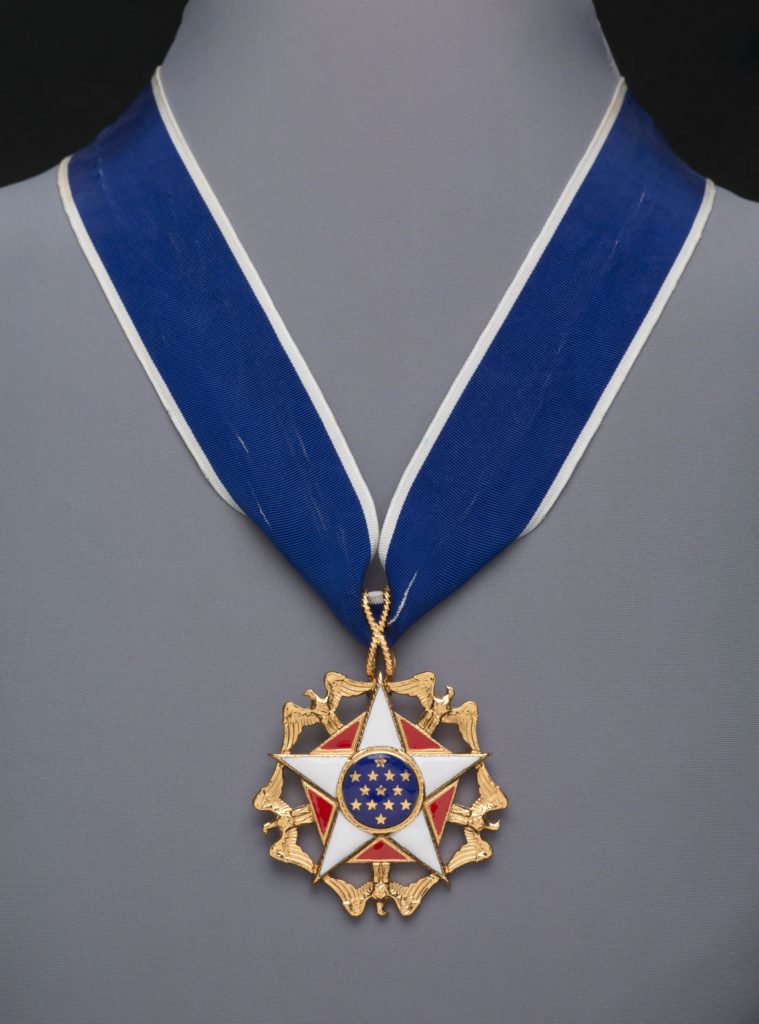
The Presidential Medal of Freedom awarded to Oprah Winfrey by President Barack Obama in 2013. Photo courtesy of Harpo, Inc.
The show’s final section, “Oprah Shapes America,” examines Winfrey as a worldwide phenomenon—think the so-called “Oprah Effect,” which leads to increased sales of any product she endorses, such as books recommended by her wildly popular book club. Winfrey transcended the television medium to become a brand unto herself. Objects in this section include the Presidential Medal of Freedom, which President Barack Obama presented to Winfrey in 2013.
“We’re providing a context for understanding not only who she is, but how she became a global figure, and how she is connected to broader stories and themes,” said Kathleen Kendrick, who curated the show with Rhea L. Combs, to the Washington Post. By telling Winfrey’s story, the museum aims to tap into larger themes about race, gender, the media, and opportunity in the US.
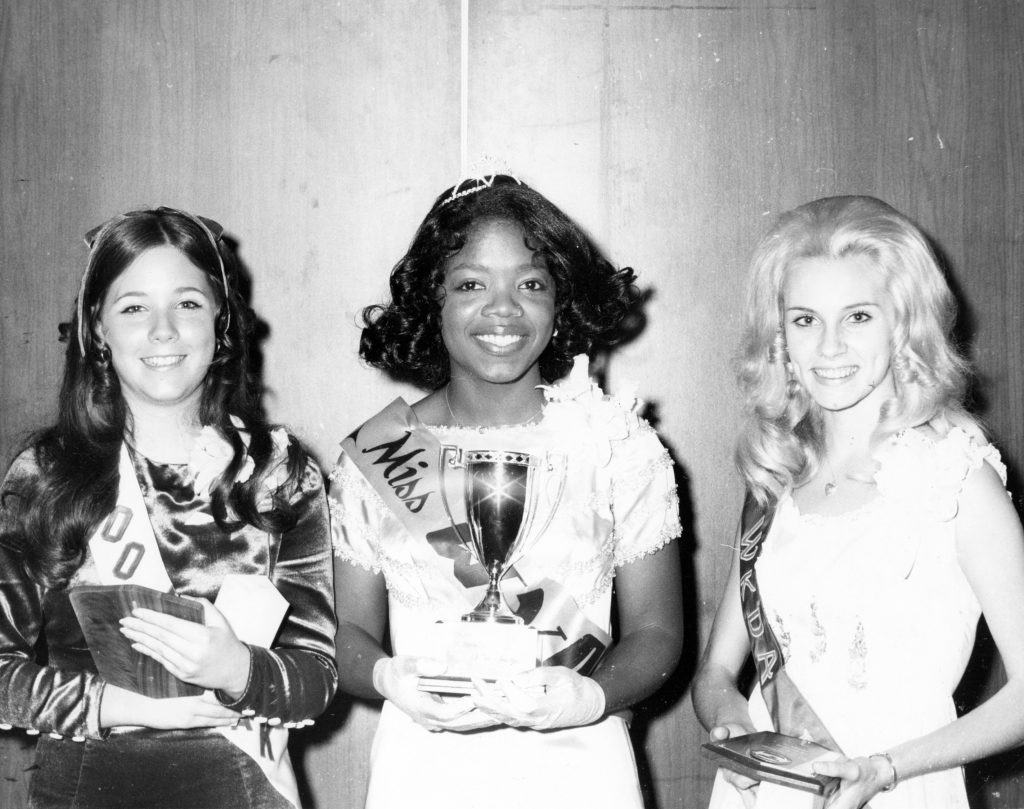
Miss Fire Prevention, 1971: Oprah Winfrey was the first black contestant to win this Nashville pageant. She represented WVOL-AM, the local radio station where she worked and told the judges she aspired to be a television journalist like Barbara Walters. Photo courtesy of the Metropolitan Government Archives of Nashville.
Museum officials planned the exhibition, titled “Watching Oprah: The Oprah Winfrey Show and American Culture,” to coincide with an anticipated drop in attendance at the nearly two-year-old museum. Demand, however, remains as strong as ever, with advanced timed entry passes already booked up through the end of September. (The hit museum is offering walk-up tickets for weekdays in September.)
“Watching Oprah: The Oprah Winfrey Show and American Culture” is on view at the Smithsonian’s National Museum of African American History and Culture, 1400 Constitution Ave NW, Washington, DC, 20560, June 8, 2018–through June 2019.